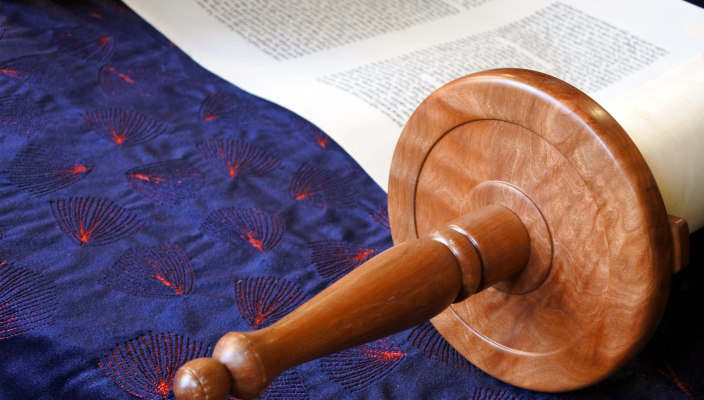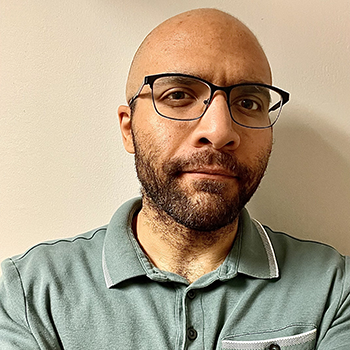
Weekly congregational Torah study is a time-honored Jewish legacy that not only provides the chance for members to learn Torah, but to also learn more about one another. Groups like these have incredible potential for spiritually, emotionally, and mentally stimulating discussion that transcends age, background, and lived experience.
Rabbi Adam Fisher leads one such Torah study group at Temple Isaiah in Stony Brook, N.Y. – and the group has met every single week for 30 years in a row. To learn more about this incredible accomplishment, I spoke with Rabbi Fisher about these weekly Torah study sessions and what they mean to him and his community.
URJ.org: How did this group start?
Rabbi Adam Fisher: Thirty years ago, one of my congregants came to me and said, “Let’s do a study group early in the morning before people go to work.” At the time, I thought the idea was crazy, but I said, “If somebody wants to study Torah, I’m there.” So we started with three people, and we met in my office, and it just grew from there. One of those original three people is still in the group!
And you’ve met every single week for the last 30 years in a row?
Yes! Every Tuesday, we start promptly at 6:30 a.m. and end promptly at 7:30 a.m. We always begin with the prayer for Jewish study (“Baruch atah, Adonai Eloheinu, Melech haolam, asher kid’shanu b’mitzvotav v’tzivanu laasok b’divrei Torah”), and we always end with the special Kaddish after study.
What do you think has contributed to the group’s longevity?
The chemistry of the group is amazing. I have always thought of myself as more a facilitator than a teacher, so we go around the room and people take turns reading. We discuss the text and the discussion ranges very far and wide.
This space provides a safe place for people to hear different ideas, to speak what’s on their mind without fear of being ridiculed. People have told me it’s a loving and safe group, and that it’s the best way to start the day. I’d say this group is probably more meaningful to them than anything else in Jewish life.
The old adage says, “Two Jews, three opinions” – and you’re saying that every opinion is respected in your group.
There’s plenty of disagreement, but it’s always very respectful and everyone is very supportive of one another. It’s a very loving place; nobody grandstands, and even though we have a lot of very smart people in our group, nobody tries to show how smart they are. They’re very open to new ideas, and it’s been very exciting.
What else does your group discuss?
We’ve been working on Pirkei Avot (Ethics of the Ancestors) for the second time. At the beginning, we studied the entirety of Philip Birnbaum’s translation of Maimonides’ Mishneh Torah. We also read all of the Haftorot and of course many texts, from Talmud to .
Also, for the last several years, I’ve been bringing in articles that I think would be of interest to the group. For instance, we recently discussed Rabbi Lawrence Hoffman’s CCAR Journal article “The Truth of Liturgy,” and I compiled a bunch of Rabbi Toba Spitzer’s sermons and articles into a single document for the group to read.
We always take our time; there’s no rush. We have this inside joke that if we finish two paragraphs, that’s considered a lot. To us, it’s not the amount of text we cover but the quality of the discussion that’s important.
What does the community get out of it?
The group gets a serious, wide-ranging discussion of the text with a freedom to bring in their own experiences. People get to hear alternative theological views that are outside of what they usually hear.
I think it’s fair to say that they’re a group of seekers; some of them are rather traditional believers, while some find it hard to believe much at all – so there’s always this effort to open them up to different ways of thinking about God than they usually had.
Additionally, there’s no attempt on my part to teach the text. I let it speak for itself and ask questions that hopefully elicit ideas, thoughts, memories, and experiences. The question isn’t “Do I believe this?” It’s “How does this personally resonate with me?”
What do you get out of it?
As I listen to people and react to text, new ideas and thoughts come to me that I never knew I had! I always read over and think about the material and write down questions, but I don’t try to overthink or overprepare it. I leave lots of room for spontaneity and things that just come up by suggestion at the spur of the moment.
I get insights that I normally wouldn’t have had on my own. In fact, meeting with this group has inspired me to write an article in which I posit the Tanach and siddur (prayer book) as art forms, so in a large part, I have our weekly discussions to thank for that.
How can other congregations create similar long-lasting initiatives?
All you need is a group of curious people, people who have open minds and who appreciate being in a group where they can trust one another, to be vulnerable and willing to potentially show their ignorance, to speak and say things that might, in other groups, embarrass them.
It doesn’t matter if the group is small; in fact, smaller groups are preferable. We’ve had as many as 15 people or more, and we’re currently around 11. It also requires a facilitator to create that inclusive atmosphere – someone who’s open to different ideas and is willing to hear them.
Related Posts

Congregational Consulting Cohorts: Addressing Challenges Together

Enhance Meeting Effectiveness with Our New Toolkit

